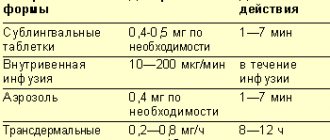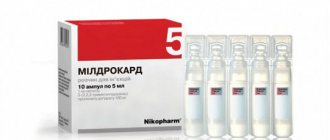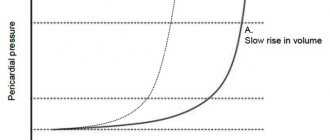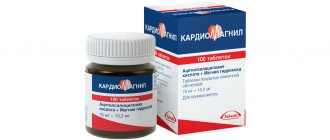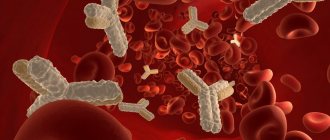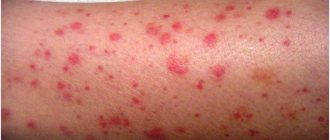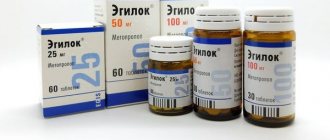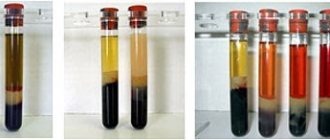If necessary, Riboxin is prescribed to activate and normalize metabolic processes in the heart muscle, as well as to better supply tissues with oxygen.
The drug has also found wide use among athletes, since its use leads to the restoration of carbohydrate, protein and fat metabolism, which increases the body's defenses and increases the effectiveness of training.
The drug is available in the form of capsules, tablets and injection solution and is produced by enterprises in the former Soviet Union and foreign countries (Great Britain, China, Switzerland).
The modern pharmaceutical industry presents numerous analogues of Riboxin, which have almost identical effects, but differ in manufacturer, and in some cases in composition and release form.
pharmachologic effect
Manufacturer: TATHIMPHARMPREPARATIONS (Russia)
Release form: tablets, solution for intravenous administration
Active ingredient: inosine
Analogs: Preductal, ATF, Lindaxa
Riboxin improves metabolic processes in the myocardium, increases the supply of oxygen to the cellular structures of the heart muscle, and restores the rhythm of heart contractions.
Riboxin's analogues
It is not always possible to prescribe Riboxin to patients with concomitant diseases in case of cardiac dysfunction. It is possible to carry out high-quality treatment of cardiac pathology with the help of various drugs analogues of Riboxin, which give an equivalent therapeutic effect. In pharmacies, such medications are sold under the guise of:
- generics;
- synonyms;
- combination medications with a similar mechanism of action.
New generation analogues of Riboxin successfully relieve pathological symptoms, improving cardiac function.
Table of Riboxin analogues with price and country of origin
| Analogue | Price | Manufacturer country |
| Trimetazidine | 110-340 | Russia |
| Preductal | 620-840 | Russia |
| ATP | 280-300 | Russia |
| Riboxin LekT | 39-80 | Russia |
| Meldonium | 530-580 | Russia |
| Cytoflavin | 420-750 | Russia |
| Ribonosine | 69-130 | Belarus |
A large selection of Riboxin analogues in tablets helps the doctor to efficiently treat cardiac patients and achieve stabilization of the pathological process.
What else can replace Riboxin, what analogues are available in the pharmacy chain? The list can be supplemented with the following medications:
- Lindax;
- Rimecore;
- Indrinol;
- Triducard MV;
- Cardionate;
- Deprenorm MV.
Such a wide selection of Riboxin substitutes allows the doctor to adjust drug therapy for various heart pathologies and improve its functionality.
Trimetazidine
Manufacturer: ALSI Pharma (Russia)
Release form: tablets
Active ingredient: trimetazidine
The drug stimulates metabolic processes in the heart muscle, prevents oxygen starvation and regulates the ion transport of potassium and magnesium in the cellular structures of the myocardium. Thanks to the action of Trimetazidine, capillary blood flow improves, which promotes regression of the ischemic area of the heart muscle.
This analogue of Riboxin is used, 1 tablet 2-3 times a day. The course of therapy is determined by the doctor depending on the type of disease and the degree of its activity.
Preductal
Manufacturer: SERVIER (Russia)
Release form: tablets, capsules
Active ingredient: trimetazidine
Preductal has a positive effect on local metabolism, stimulating it. By improving the nutrition of the heart muscle, intracellular acidosis and the area of myocardial damage are reduced. The action of the analogue does not lead to changes in hemodynamic parameters.
The drug is prescribed 1 tablet 2 times a day, and capsules 1 time a day, as they have a prolonged effect. The duration of treatment is determined individually.
ATP
Manufacturer: MICROGEN (Russia)
Release form: solution for intramuscular and intravenous administration
Active ingredient: triphosadenine
ATP is a natural component of body tissues, which ensures the normalization of metabolic processes. The analogue improves coronary circulation and impulse conduction of the heart, helping to restore heart rhythm.
Depending on the degree of activity of cardiac pathology, the drug is prescribed intramuscularly at 1.0 ml 1 time per day, followed by increasing the dosage as recommended by a doctor. The IV analogue of Riboxin is administered only in a hospital setting in a dosage of 1.0 to 5.0 ml.
Riboxin LekT
Manufacturer: TYUMEN HFZ (Russia)
Release form: tablets, solution for intravenous administration
Active ingredient: inosine
The drug improves metabolism in the heart muscle, increases the supply of oxygen to the myocardium, and restores heart rhythm. Riboxin LekT helps restore capillary blood flow in the area of cardiac ischemia.
The analogue is used orally and intravenously according to a schedule determined by the doctor.
Meldonium
Manufacturer: PHARMSTANDARD-LEKSREDSTVA (Russia)
Release form: capsules
Active ingredient: meldonium
Meldonium is included in the pharmacological group of metabolic drugs. The analogue restores oxygen delivery to the cellular structures of the myocardium. The drug slows down the formation of an ischemic focus, enhances regenerative processes in it and shortens the recovery period after acute myocardial infarction.
An analogue of Riboxin is prescribed orally, 1–2 capsules. The frequency of its administration and the course of treatment are determined by the doctor depending on the type and activity of the pathological process.
Cytoflavin
Manufacturer: POLYSAN NTFF (Russia)
Release form: tablets, solution for intravenous administration
Active ingredient: succinic acid, inosine, nicotinamide, riboflavin
Cytoflavin is a combination drug whose active ingredients are natural metabolites that improve tissue respiration. The analogue has an antioxidant effect and improves the delivery of oxygen to the cellular structures of the body.
The drug gives good results for vascular pathologies of various origins. The medication is prescribed 2 tablets 2 times a day for 25 days.
Ribonosine
Manufacturer: BORISOV MEDICAL DRUGS PLANT (Republic of Belarus)
Release form: tablets and solution for intravenous administration
Active ingredient: inosine
The drug helps to increase the contractility of the heart muscle, resulting in an increase in myocardial stroke volume. Ribonosine has a positive effect on metabolic processes occurring in the myocardium. Under its action, heart rhythm is restored, blood clotting is reduced, and tissue regeneration of the ischemic area is stimulated.
The analogue is taken 1 tablet 3 times a day or 200 mg intravenously 1 time a day. The duration of treatment is recommended by the doctor.
Material and methods
The study involved 107 patients aged 60 to 79 years with coronary artery disease and angina pectoris of functional class II/III (FC), the diagnosis of which was established in accordance with the recommendations of the All-Russian Scientific Society of Cardiology (2008). The study included patients with sinus rhythm with a frequency of 70 beats/min or more at rest, who could not take the beta-blocker bisoprolol prescribed to them at a dose higher than 1.25-2.5 mg/day, more often due to the development of second-degree atrioventricular block or arterial hypotension. Exclusion criteria also included severe cardiovascular disease other than ischemic heart disease; stenosis of the left coronary artery, rest angina, unstable angina, microvascular angina; chronic heart failure (HF) FC III/IV; arterial hypotension with symptoms or uncontrolled arterial hypertension of the 3rd degree; atrial fibrillation or flutter; implanted pacemaker or defibrillator; inability to perform or interpret the results of an exercise test - FST (physical disability, intermittent claudication, Wolff-Parkinson-White syndrome, complete left bundle branch block, severe left ventricular hypertrophy - LV); significant impairment of liver or kidney function; anemia; diseases of the thyroid gland with the need for their pharmacotherapy; diabetes mellitus requiring treatment with insulin; other diseases that can worsen the prognosis; intolerance to drugs planned for use in the study.
The structure of the study was approved by the ethics committee of the Kuban State Medical University. All patients signed informed consent after reading the study protocol.
To achieve a resting heart rate of 55-60 beats/min in all patients, in addition to bisoprolol (Concor Cor, Takeda, Japan), ivabradine (Coraxan, Servier, France) was used, selecting its dose from 2.5 to 7. 5 mg 2 times a day. If angina pectoris or painless myocardial ischemia persisted for 1 month according to clinical observation and Holter monitoring of the electrocardiogram (HM-ECG), patients were randomized using the random number method to additionally receive trimetazidine MB (Preductal MB, Servier, France) 35 mg twice a day. day ( n
=54) or ranolazine (Ranexa, BerlinChemie, Germany) 500 mg 2 times a day (
n
=53).
A comprehensive examination of patients was carried out before starting to take three-component combinations of AAP (while taking bisoprolol and a selected dose of ivabradine) and after 6 months of continuous therapy, including, in addition to general clinical and laboratory methods, standard electrocardiography in 12 leads; HM-ECG with assessment of the duration of painless reduction in the ST
; treadmill test using a modified Bruce protocol; echocardiography (Echo-CG) in M- and B-mode, pulsed wave, including tissue, Dopplerography [7, 8]; photoplethysmography using the Angioscan-01 apparatus (Angioscan, Russia), determining the phase shift during the occlusion test and the stiffness index of large arteries; assessment of quality of life (QOL) using the Seattle Questionnaire (SeattleAnginaQuestionnaire).
The effectiveness of AAT was assessed by comparing the dynamics of the total duration of the load according to the results of physical exercise performed in the morning at approximately the same time. On the day of FN, patients did not take morning doses of trimetazidine or ranolazine in order to assess the effectiveness of the drugs 12 hours after the last evening dose. Short-acting nitrates could be used as needed, but not less than 2 hours before TT. ST segment displacements
measured 0.08 s after the J point in three consecutive
QRS
with a horizontal isoelectric line.
ST
segment depression at baseline (maximum acceptable ≤0.5 mm), changes were calculated from the level at rest to the level during exercise.
ST
segment elevation at rest , then
ST
during exercise was calculated from the isoelectric ECG line.
The time before the onset of ST
was defined as the duration of exercise until
the ST
by 1 mm in the case of an isoelectric or elevated
ST
at rest, or until the depression increased by another 1 mm compared to the initial position in patients with
ST
at rest.
During the drug treatment study, if ST
or angina did not occur during exercise therapy, the total duration of exercise was used as the time to
ST
and time of angina onset. Reasons for discontinuation of exercise therapy include limiting angina, shortness of breath, or extreme fatigue.
Drugs that may interfere with the natural history of angina or the interpretation of ST
(long-acting nitrates, calcium antagonists, other β-blockers, potassium channel blockers, molsidomine, antiarrhythmics, cardiac glycosides) were not used during the study. In addition, taking medications with clinically significant interactions with bisoprolol, ivabradine, trimetazidine, ranolazine (according to the instructions for them) was not allowed.
Patients recorded in a special diary the occurrence of angina attacks and the use of short-acting nitrates, changes in the frequency of which were considered as a manifestation of the antianginal effect of therapy.
Statistical processing included survey data from patients who were constantly taking prescribed AAPs using the Statistica 6.1 application package (StatSoft Inc, USA). The resulting groups were checked for normality of distribution using a one-sided Kolmogorov-Smirnov test. All data are presented as arithmetic mean ( M
), standard deviation of the arithmetic mean (
SD
).
The reliability of differences in indicators for quantitative characteristics was determined using t
, for qualitative ones - using the χ2 criterion, recognizing them as statistically significant at
p
<0.05.
Riboxin or Mildronate – which is better for the heart?
Manufacturer: GRINDEX (Latvia)
Release form: capsules
Active ingredient: meldonium
Both drugs have different active ingredients, but the same therapeutic effect. Riboxin is involved in the processes of glucose processing by the body, due to which the energy balance in the cellular structures of the myocardium is improved.
The action of its analogue Mildronate is to stimulate enzymatic activity, which leads to an increase in the energy potential of the body. For the heart, the best drug is Meldonium. Its effect on the heart muscle gives good results, and in practice it has proven its effectiveness in the treatment of cardiac diseases.
results
The formed 2 groups of patients turned out to be well balanced according to a number of indicators (Table 1).
Table 1. Baseline demographics, clinical characteristics, and FN results of patients randomized to trimetazidine or ivabradine. Note. Here and in the table. 2: data are presented as M±SD or absolute number of patients (%). ACE - angiotensin-converting enzyme; ARBs—angiotensin II receptor blockers; BP - blood pressure.
The mean doses of ivabradine that achieved target resting heart rate when added to low-dose bisoprolol were 6.2 ± 1.8 and 6.0 ± 2.2 mg in the trimetazidine and ivabradine groups, respectively.
After 6 months of three-component AAT, there was a significant improvement in exercise tolerance in patients of both groups. Thus, the total duration of the load increased by 65.4±102.7 s ( p
<0.001) in the trimetazidine group and by 60.3±98.9 s (
p
<0.001) in the ranolazine group, the time before the onset of angina pectoris - by 63.8±105.5 (
p
<0.001) and 61.7±103, 0 (
p
<0.001) s, time to depression
of ST
by 1 mm - by 77.0 ± 111.8 (
p
<0.001) and 74.2 ± 108.5 (
p
<0.001) s, respectively (differences between groups are not significant ). The frequency of angina attacks was significantly reduced from 2.2 ± 3.5 to 0.8 ± 2.4 attacks per week when using a combination of drugs that included trimetazidine, and from 2.0 ± 2.4 to 0.9 ± 2.3 - combination that included ranolazine (the difference between the groups was not significant). Moreover, the addition of trimetazidine or ranolazine to therapy was not accompanied by significant changes in resting heart rate and blood pressure.
The dynamics of the main indicators of HM-ECG, EchoCG, photoplethysmography and QoL against the background of compared triple AAT regimens are presented in Table. 2.
Table 2. Dynamics of indicators of HM-ECG, EchoCG, photoplethysmography and QOL during 6 months of AAT Note. ECG - electrocardiogram; LA - anteroposterior diameter of the left atrium; LA IR—left atrium volume index; EDA—LV end-diastolic size; LVEF—left ventricular ejection fraction; E/A is the ratio of the maximum speed of early diastolic filling of the LV and its filling in atrial systole; IVRT—LV isovolumic relaxation time; DT — time of slowing down of blood flow of early diastolic filling of the LV; e' is the maximum velocity of diastolic rise of the LV base in early diastole; * — p<0.05 when compared with the initial value of the indicator.
ST segment decline
decreased by more than 1 mm during the day under the influence of therapy, which included both trimetazidine and ranolazine, but to a significantly greater extent with the first method of therapy (
p
<0.001). This advantage of trimetazidine is of practical importance, since it can positively influence the prognosis of patients [9].
In both groups, there was a comparable improvement in systolic and diastolic function of the left ventricle, the structural and functional state of large arteries. Both methods of AAT provided similar statistically significant improvements in QoL on all scales of the Seattle Questionnaire.
During 6 months of controlled therapy, no deaths or development of acute coronary syndromes were registered. Visual symptoms (photopsia) associated with ivabradine were observed in 2 patients in each group. Treatment with trimetazidine was accompanied by periodic discomfort in the gastrointestinal tract (usually a feeling of heartburn) in 3 patients. Ranolazine caused dizziness in 3 and nausea in 1 patient. In no case did this drug prolong the corrected QT
more than 450 ms. All side effects of the drugs used were mild, transient in nature, and did not lead to refusal to take them.
Riboxin or Panangin - which is better for the heart
Manufacturer: GEDEON RICHTER (Hungary)
Release form: tablets
Active ingredient: magnesium aspartate, potassium aspartate
Despite the fact that both medications are in different pharmacological groups, they can improve the function and structure of the heart muscle. For myocardial diseases accompanied by potassium and magnesium deficiency, Panangin will be the best for the heart.
The Panangin analogue has a positive effect on heart rhythm, the disturbance of which often accompanies cardiovascular pathology.
Riboxin or Asparkam – which is better?
Manufacturer: MEDISORB (Russia)
Release form: tablets
Active ingredient: potassium aspartate, magnesium aspartate
Both drugs are used for various cardiac diseases. Riboxin is better suited for stabilizing metabolic processes. Its use is preferable for ASD (heart disease in the form of a ventricular septal defect). With this pathology, Riboxin strengthens the walls of the myocardium and improves oxygen supply to the heart muscle.
If there is an electrolyte imbalance, that is, a lack of potassium and magnesium in the blood serum, Asparkam will be the best analogue for the heart. It stimulates the contractility of the heart muscle, which leads to positive results in myocardial function.
Recommendations for the treatment of heart disease always remain with the cardiologist. In this case, self-medication is unacceptable. The prescription of Riboxin or its analogues is based on mandatory examination of patients through laboratory and instrumental examination.
Only a doctor can prescribe quality therapy and answer the question: how to replace Riboxin in various pathological processes in the heart muscle.
Reviews
Mikhail, 28 years old (Omsk) I have been involved in strength sports for a long time. Initially, to increase the body’s resistance to physical activity, the trainer recommended using Riboxin. Maybe, of course, he helped, but it was unnoticeable to me. I felt the difference only after I was offered to replace Riboxin with Mildronate. After using it for 2 weeks, I can train much longer, fatigue has disappeared, and the effectiveness of training has increased.
Irina Vitalievna, general practitioner (Norilsk) It is very difficult to say what is better than Riboxin or drugs that have a similar effect to it. If we talk about structural analogues of Riboxin, then there is practically no difference in effectiveness. In this case, you need to pay attention to additional substances and price. Some patients prefer to be treated with expensive medications, others choose cheap domestic ones. As for drugs that have a composition different from Riboxin, an individual approach is required. Each medicine is aimed at getting rid of certain diseases, but only has its own contraindications and side effects.
Svetlana Maksimovna, 64 years old (Belgorod) I have been suffering from chronic coronary heart disease (angina) for a long time. To maintain my health, I took Inosie-F as prescribed by my doctor. The medicine is produced in Taiwan and is quite expensive. I am a pensioner, my pension is small, there is no one to help me. Recently, a friend told me that there is a domestic substitute for Inozie-F - Riboxin, which costs a penny. I decided to try it. The result pleased me. The effect of the drugs is the same, but the price of Riboxin is much lower.

